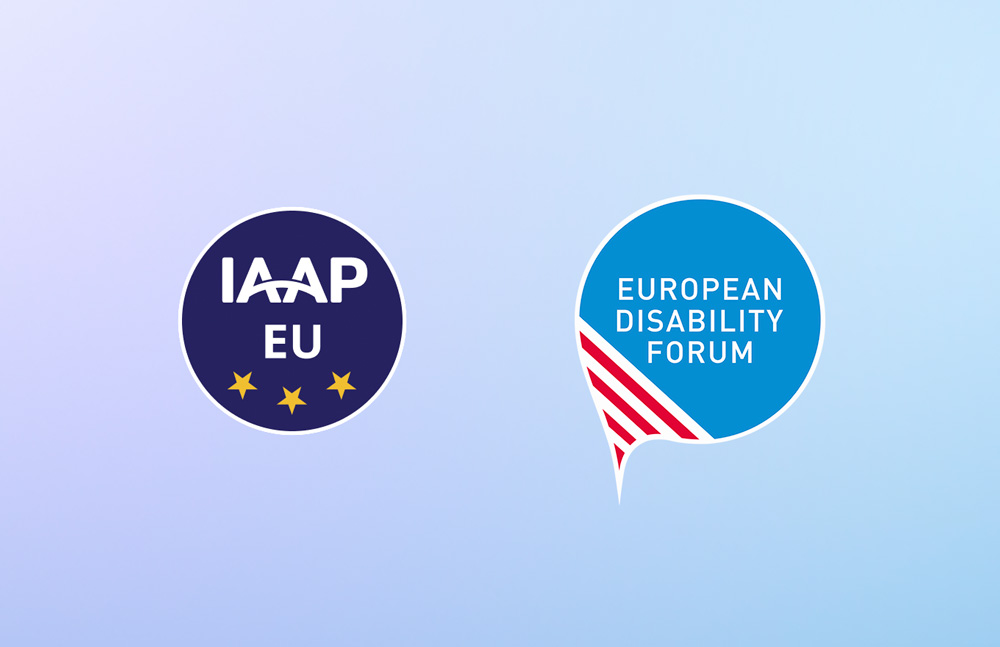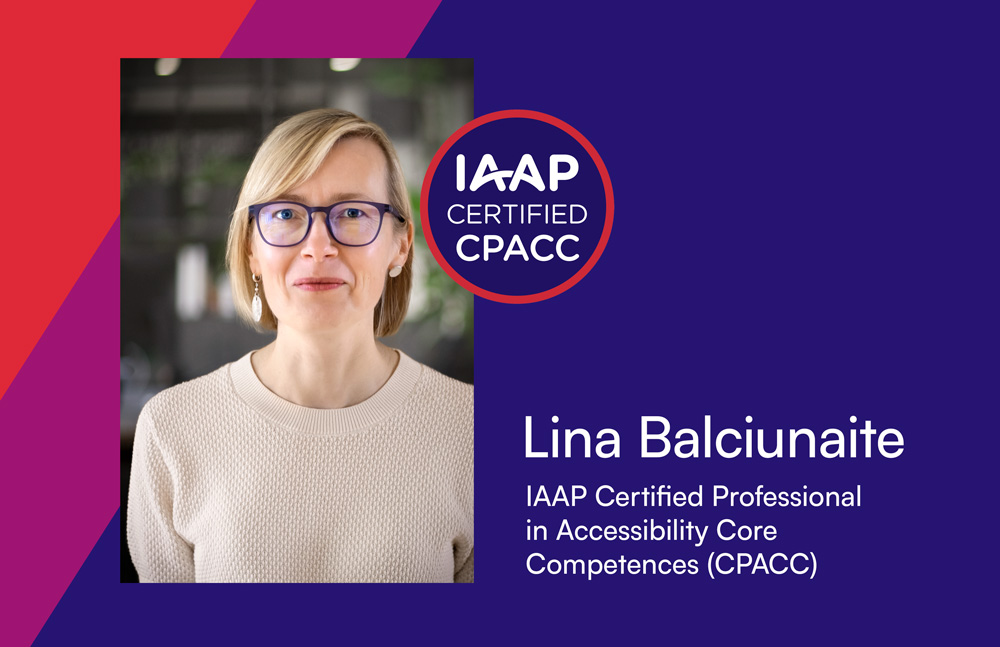Accessible Website Creation: Top 5 Platforms You Need to Know About

Whether you're a developer, business owner, or a non-profit organization, building an accessible website is essential to ensure that your website is usable by everyone, including individuals with disabilities. Fortunately, there are a number of website creation platforms, such as drag and drop no-code website design builders, that prioritize accessibility and offer features to help ensure that your website is inclusive.
In this blog post, we highlight the key accessibility features of the most popular website builders to help you choose the best platform for your project.
The accessibility factors when choosing a website builder
To evaluate the accessibility of website builders we considered the following factors:
- Interface usability. Easy to use and navigate for both users and developers.
- Built-in accessibility features. Includes built-in tools and features that support accessibility, such as proper headings, landmarks, alt texts, tab index, and attributes.
- Customization. Allows for an easy customization to meet specific accessibility needs.
- Responsiveness. Supports responsive design to ensure accessibility across various devices and screen sizes.
- Navigation. Enables clean and organized navigation, making it easier for users with disabilities to browse.
- Evaluation and Testing Tools. Offers tools for evaluating and testing website accessibility throughout the development process.
- Community and Resources. Has a strong community and resources to assist developers in implementing and maintaining accessibility.
- WCAG Compliance. Supports compliance with the Web Content Accessibility Guidelines (WCAG), the international standard for web accessibility.
Top website builders for accessibility
1. Webflow
Webflow is a cloud-based website builder and content management system (CMS) that allows users to design, build, and launch responsive websites without any coding knowledge. It provides a drag-and-drop interface for creating and editing web pages, as well as a visual content editor. In addition, they offer hosting, SSL certificates, and various integrations with other tools and services.
It is known for its design-focused approach and advanced features for creating complex website interactions and animations.
Webflow is our number one and go-to website building platform for completely custom design solutions and accessibility.
Accessibility advantages of Webflow
- Built-in accessibility features. Webflow provides a range of accessibility features, including keyboard navigation, Accessible Rich Internet Applications (ARIA) support, and support for screen readers.
- ALT text automation. This is a useful feature which automatically generates alt text for images based on their file names and captions. This can be a huge time-saver for website creators who want to ensure that their images are accessible to all users.
Alternatively, you have an option to set them as decorative images. In the context of web accessibility, decorative images are images that do not add any meaning or information to the content of a web page. According to the Web Content Accessibility Guidelines (WCAG), decorative images should be given null or empty alt text attributes, which will tell screen readers to skip over them. - Customization. You can add code as needed to set custom attributes, control markup, set custom focus states, and more.
- Evaluation tools. It also offers a built-in accessibility audit tool that helps you ensure that your website is accessible. Webflow check for some common issues like missing alt text, empty links, and out-of-sequence heading elements.
It simulates low-vision viewing and checks text contrast ratios. - Community and Resources. Offers an accessibility checklist that can be used to ensure that a website meets industry standards. Additionally, Webflow has an active forum where users can ask for help with accessibility features or discuss best practices. Moreover, they offer a range of cloneable elements that are designed specifically with accessibility in mind, making it easier for users to create accessible web content.
Accessibility drawbacks of Webflow
- Interface usability. Webflow is generally considered to be a very strong choice for accessibility, but some users have reported that its design interface can be difficult to navigate with a keyboard.
2. WordPress
WordPress is a popular content management system (CMS) that allows users to create and manage websites. It was originally designed as a blogging platform, but has evolved over time to become a versatile tool for creating websites of all types, from simple blogs to complex e-commerce sites.
WordPress is open-source software, which means that anyone can use, modify, and distribute the code for free. It is highly customizable and supports a vast library of plugins and themes, making it a flexible and powerful tool for website creation.
Accessibility advantages of WordPress
WordPress is an open-source content management system (CMS) that has a strong focus on accessibility. It provides a range of accessibility features such as keyboard navigation, support for screen readers, and support for text-to-speech. Additionally, there are a range of themes designed with accessibility in mind available for WordPress that can further enhance the accessibility of your website.
- Built-in accessibility features: WordPress includes several built-in accessibility features, such as keyboard shortcuts for managing the dashboard, screen reader support, and a high contrast mode.
- Accessibility-ready themes: WordPress has an "Accessibility-ready" tag for themes that meet certain accessibility standards. These themes are designed with accessibility in mind, making it easier for users to create accessible websites without having to customize the theme themselves.
- Community support: WordPress has a large community of developers and users who are committed to making the platform more accessible. This community creates resources, shares best practices, and provides support to users who want to create accessible websites.
Accessibility drawbacks of WordPress
Some WordPress themes or plugins may not be designed with accessibility in mind, which can create barriers for users with disabilities.
3. Squarespace
Squarespace is a popular all-in-one website builder platform that allows users to create websites without needing to know how to code. It provides a variety of templates and drag-and-drop tools that make it easy to customize the design and layout of a website.
Squarespace also offers built-in features such as hosting, SEO optimization, and e-commerce functionality, making it a popular choice for small businesses, artists, and other creatives.
Accessibility advantages of Squarespace
- Built-in accessibility features. Squarespace includes some built-in accessibility features, such as image alt tags and the ability to add captions to videos.
- User-friendly interface. Squarespace is known for its user-friendly interface, which can make it easier for users to create and manage accessible websites.
- Responsive design. Squarespace templates are designed to be responsive, which means they adjust automatically to different screen sizes and devices.
Accessibility drawbacks of Squarespace
- Customization. While Squarespace templates offer some customization options, they may not be as flexible as building a website from scratch or using a more robust platform like Webflow.
4. Shopify
Shopify is an e-commerce platform that allows individuals and businesses to create online stores and sell their products or services. It provides a range of tools and features to help merchants manage their online business, including website design templates, inventory management, payment processing, and marketing and analytics tools.
Shopify also offers a range of integrations and apps that can be used to extend the functionality of the platform.
Accessibility advantages of Shopify
- Accessibility-ready themes. Shopify offers several accessibility-ready themes that have been designed with accessibility in mind. These themes include features such as high contrast modes, keyboard navigation, and text-to-speech functionality.
- Alt text and captioning. Shopify allows merchants to add alt text to their product images, making them more accessible to users with visual impairments. Merchants can also add captions to their product videos to improve accessibility.
- Responsive design. Shopify's responsive design ensures that its online stores are accessible on a variety of devices, including desktops, laptops, tablets, and smartphones.
- Assistive technology compatibility. Shopify is designed to be compatible with a wide range of assistive technologies, including screen readers, voice recognition software, and braille displays.
- Accessibility app store. Shopify has an accessibility app store that offers a range of accessibility apps that merchants can use to make their stores more accessible. These apps include tools for improving keyboard navigation, color contrast, and font sizes.
Accessibility drawbacks of Shopify
- Customization. While Shopify allows for some level of customization, it can be difficult to make extensive changes to the design and functionality of the site.
- Theme limitations. Shopify themes can sometimes be limited in terms of accessibility features, and not all themes are created with accessibility in mind.
- App compatibility. Some third-party apps and plugins may not be fully accessible, which can impact the overall accessibility of a Shopify site.
5. Headless CMS
A Headless CMS, also known as an API-first CMS, is a content management system that separates the content from its presentation layer, providing a back-end environment for content creation and management that can be used with any front-end technology. This allows for more flexibility and customization in website development. Some examples of Headless CMS platforms / providers are Contentful, Prismic, Strapi, Sanity, and Kentico Kontent.
Accessibility advantages of Headless CMS
- Built-in accessibility features. Headless CMSs often have built-in features to support accessibility, such as image alt text fields and content structure options.
- Customization. Using a headless CMS can be a good option for building accessible websites because it allows developers to focus on the content and structure of the website separately from the presentation layer, which can improve accessibility.
- Integration. It also enables developers to integrate with third-party tools and services that may have specific accessibility features or compliance with accessibility standards.
Accessibility drawbacks of Headless CMS
- Usability. Since headless CMS separates the front-end and back-end of a website, it can be more difficult to maintain consistency in the site's design and user experience across different devices and platforms. This can potentially lead to a less cohesive user experience and make it harder to ensure that the site is accessible to all users.
- Community and Resources. Since headless CMS is a relatively new technology, there may be a limited pool of developers who are skilled in working with it, which could impact the availability of support and resources.
Conclusion
Overall, it's important to keep in mind that no website creation platform is perfect when it comes to accessibility. However, by being aware of the potential limitations of each platform and taking steps to address them, you can still create an accessible website that meets the needs of all users.
June / Karlove offers accessibility compliance, accessibility knowledge and culture, and accessible design and development services.
Schedule a discovery call to learn how to guarantee your company's digital products are accessible to individuals with disabilities.
Newsletter subscription
Twice a month we send insights, event updates, and valuable resources on best accessibility practices in Lithuania, the Baltics, and the EU market. Subscribe to get the latest knowledge and stay informed.




